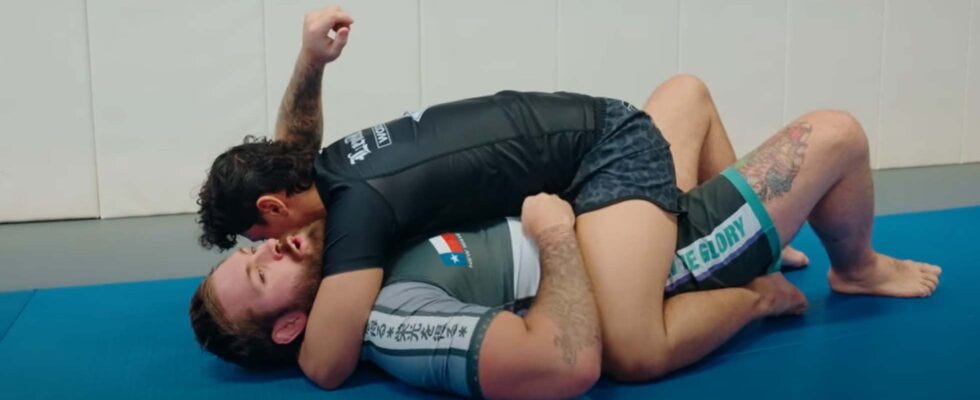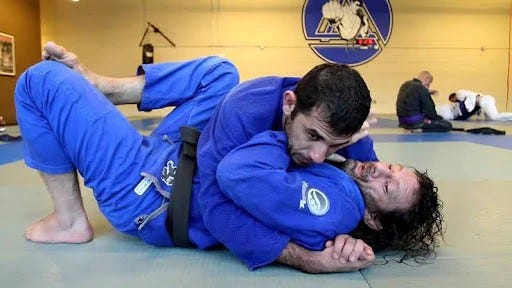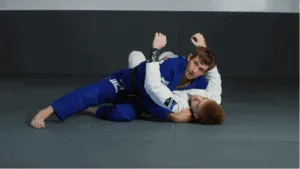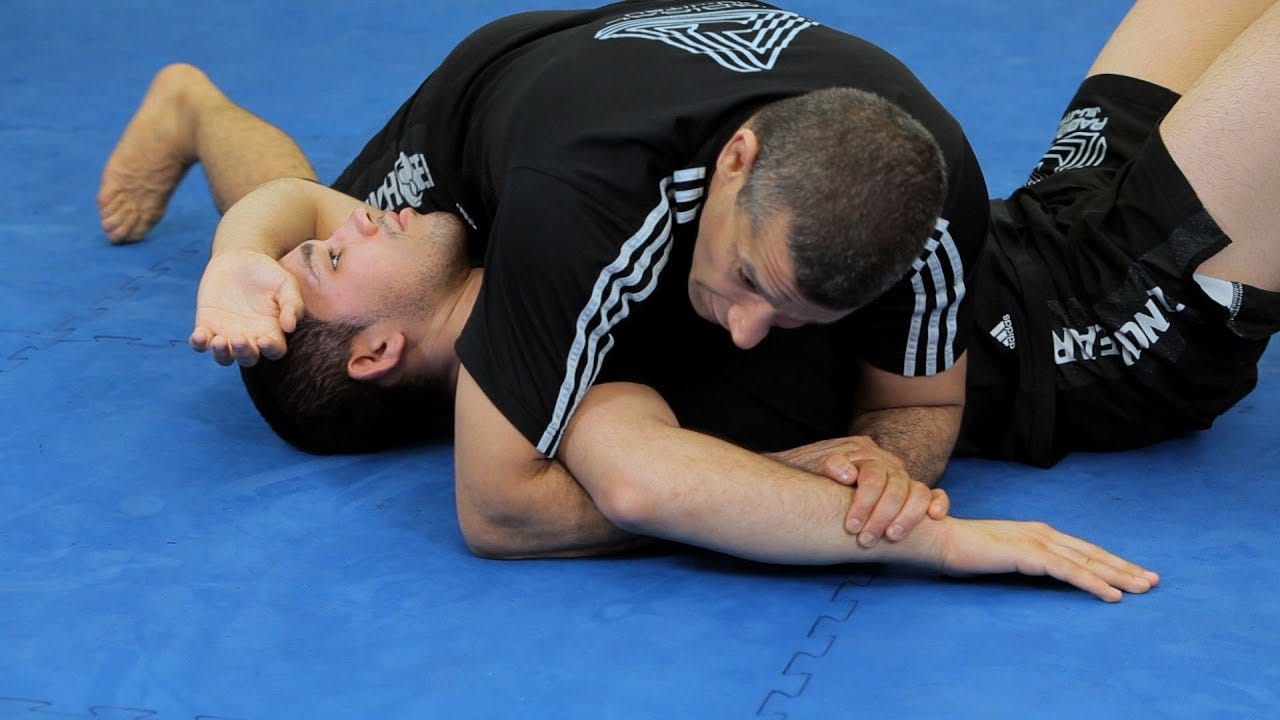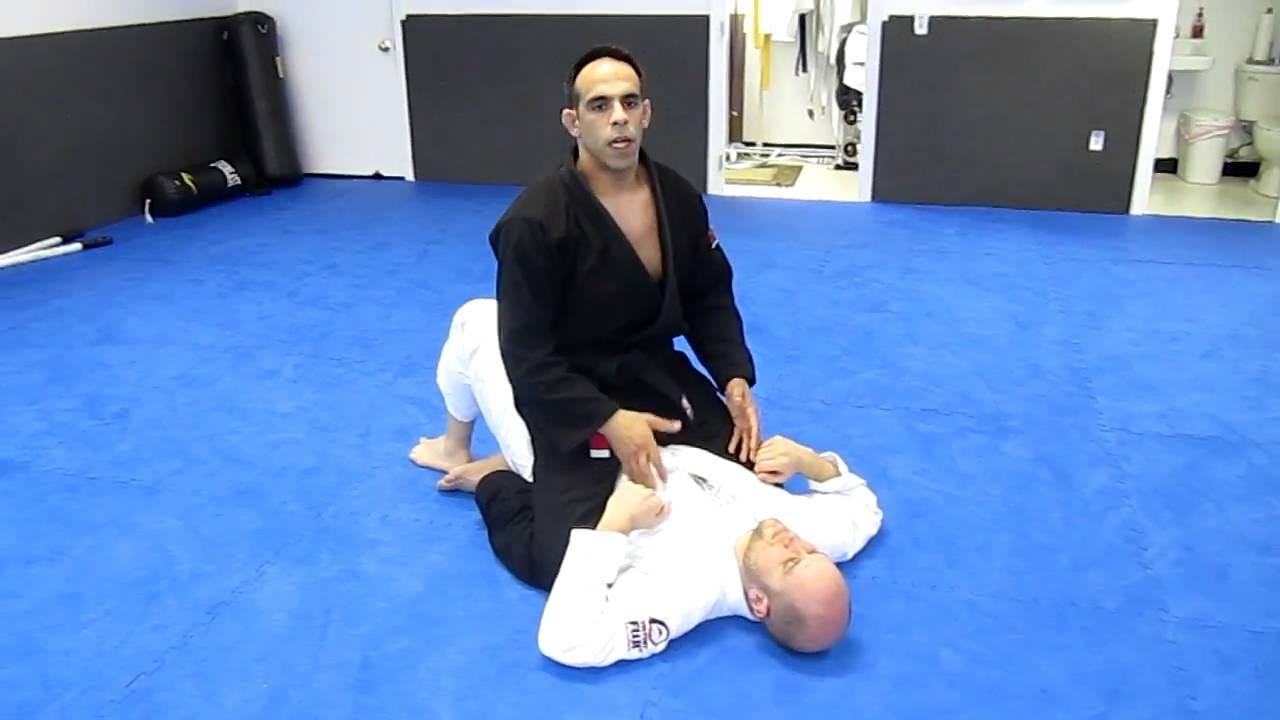Aren't you tired of being on the bottom side control or mount for an entire round and not being able to do anything about it? Are you the type to give up a submission just to restart the round? Or even worse, do you tap to pressure?
Well, if that's you, you're lucky, because today I'm going to give you the best pin escapes guide on the entire internet. In this guide, I'm going to give you tasks and goals so that you can develop the skills you need to escape from a pin with resistance.
One of my first articles was on pin escapes. Recently, a friend asked me to rewrite it, and I thought it would be a good idea, considering that I have improved a bit in my ability to communicate the right information. Also, that article was kind of lame, so this one is an attempt to do a "Big Brother" and pretend that the first one never existed.
As I always try to say in these guides, just reading them won't make you Garry Tonon. You have to do the work. Play games with the goals I will describe, and every time you find yourself in a pin, work your way out of it by following the task goals. Finally, put your ego aside and intentionally put yourself in bad positions in training against people worse than you. It's funny how old fat brown belts will talk about Roger Gracie's fundamentals, but refuse to follow his example in terms of putting themselves in bad positions. Don't be like them.
What Makes A Pin Work?
If you asked me to explain this to a person who has never done jiu-jitsu and doesn't understand what " wedges" are, I would explain it like this: A pin is a result of one person immobilizing another person's hips and shoulders simultaneously to a certain degree, with their chest facing the other person's chest or back. Simple, right? Now let's work on this idea a little bit.
A pin, by definition, stops movement. The main type of movement we are trying to eliminate when we pin is rotation, more specifically torso rotation. This rotation happens with the hips and shoulders, so to stop the rotation we need to hold the hips and shoulders still. Chest to chest or chest to back allows you to attach yourself to your opponent's shoulders.
How To Escape A Pin?
Now I'm going to give you the general idea that you'll see applied in all the games I'm going to give you next.
To keep our hips and shoulders still, our opponent will probably have to use his arms, legs and head. The way to use them is to put them inside our arms, legs and head. This is inside position.

The way to escape a pin is to regain the inside position until we can:
Recover guard.
Invert.
Stand up.
So on all the pins we're always trying to get some kind of inside position. It can be an elbow inside, a whole arm, a foot... But it can be hard to just get inside. This is where destabilization comes in. You want to force your opponent to extend his limbs to stay on top so that you can use that extension to regain inside position.
Now I'm going to give you tasks to escape from the main chest-to-chest pins: side pins and mount. I won't talk about chest-to-back escapes because I already touched on that in my 3-part back attack guide, especially the second part, so go check that out.
Escaping Side Pins
Game 1:
The top player will start on his knees past his opponent's legs with chest to chest contact. He will have his far arm under his opponent's armpit (underhook) and his near arm under his head (crossface). The bottom player will lie flat on his back. This is just a basic side control configuration.
The top player's goal is to stay on top and hold his partner down while staying past the legs. His job is to keep the underhook at all times. The top player has no chance of winning this game.
The bottom player's goal is to get his arm out of the underhook and get his elbow glued to his ribs. To do this, he may find it useful to try to force the top player to post his hands on the mat. If the bottom player is able to free his arm, he wins and the game starts again.
Game 2:
In this game, the top player now starts with only the underhook on the far side, but without the crossface. The bottom player will have his near arm in front of the top player with his elbow glued to his ribs.
The top player's job remains the same: to stay on top and hold his partner down while staying past the legs. He may find it helpful to try to get access to the head as before. He could also try to get under the elbow of the close arm for more control, which is preferable to the head. The top player can get under the elbow with his arm, knee, head, whatever he finds possible.
The bottom player's goal is to get his legs back in front of the top player, to become the top player (turning the top player into the bottom player), or to get back up. To do this, he may find it useful to bring his arms back in as before and use them to push the top player. Again, it may help to have the top player post his hands on the mat.
If the bottom player brings his legs in front, becomes the top player or stands up, he wins and the game starts again.
Game 3:
The game starts with the same situation as before.
Now the top player can win this match by: getting a figure four on one of the bottom player's arms (kimura or americana for example), or by covering the hips with his legs, chest to chest or chest to back (stepping into mount or tacking the back). He can do whatever he thinks is useful, such as moving around the bottom player and changing sides. Remember that while there are new win conditions, they are not possible if the top player can't stay on top and hold his partner down while staying past the legs.
The bottom player has the same goals as before: regain inside position to get his legs back in front, become the top player, or get up.
If either player achieves their goal, the game starts over.
Escaping Mount
Game 1:
This game begins in the mount position (top player sitting on the hips of the bottom player, facing chest to chest).
The top player's goal is to stay on top of the hips and hold his partner down. He will also try to pin his opponent's hands to the mat or his own body in any way he can for as long as possible.
The bottom player's goal is to get his opponent to post his hands to the mat any way he can for as long as he can. He will also try to get his own hands on the top player's hips and/or knees for as long as he can.
There is no way to win this game, it's a continuous game.
Game 2:
Same scenario as before.
The top player's job remains the same: to stay on the hips and hold his partner down while trying to pin hands to the mat or body of the bottom player.
The bottom player will continue to try to get the top player to pin hands to the mat while keeping his own hands on the bottom player's hips and/or knees. His goal is to get his legs back in front of the top player, to become the top player, or to get back up. If he does any of these three things, he wins.

Game 3:
Again, the same scenario as before.
Now the top player can win the game if he's able to get at least one of the bottom player's arms over his head. To do this, the top player needs to stay on top on the hips and hold his partner down, pin hands, and somehow get under the elbow and work from there to get the extension.
The goals of the bottom player remain the same: make the top player post hands and get your hands on his hips and/or knees and push to get your legs in front of your opponent, become the top player, or stand up.
When either player achieves their goal, the game starts over.
So…
That's basically it. Play with these games and goals for a while and you'll see improvements in your pin escapes.
Anyway, I hope you enjoyed the post, have a nice day!



